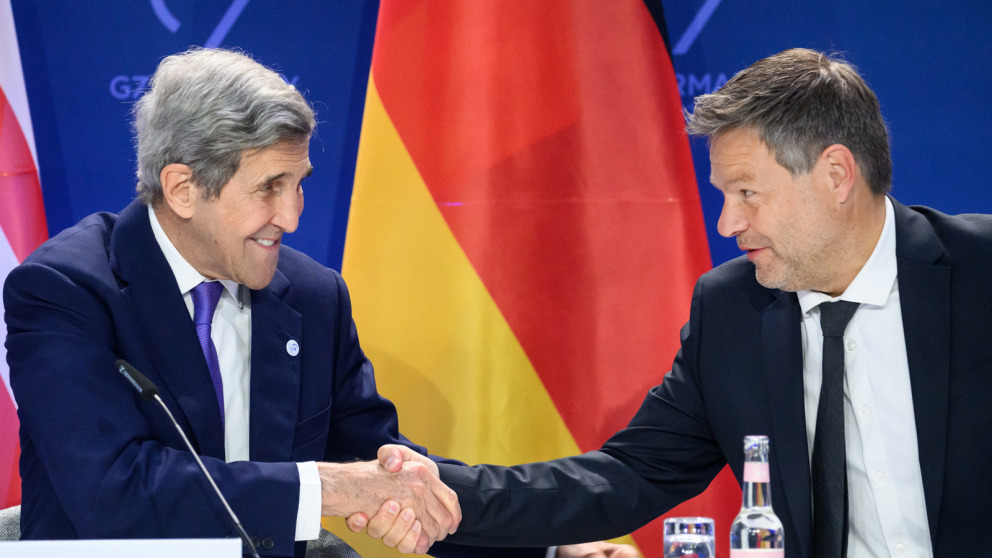Germany and USA Strengthen Cooperation for the Energy Transition
01.11.2022
Germany and the United States are both important players in international climate policy. However, the two countries take different approaches. A new article by researchers from RWTH Aachen University and the IASS takes stock of their common interests and opportunities for cooperation between the two countries.

Germany and the United States are major international donors in the energy sector. The two countries participate in a variety of bi- and multilateral cooperation formats in the fields of energy and climate policy and have historically both been leaders in clean energy technology development. But while Germany‘s energy policy favours strong state regulation, the US relies primarily on market forces.
"In the USA, efforts to protect the climate focus on promoting low-carbon technologies and increasing demand for green products with the aim of accelerating the decarbonization of supply chains and strengthening US companies. In Germany, policymakers have favoured binding decarbonisation goals for individual sectors such as energy and industry, coupled with regulatory solutions such as the carbon price established for the transport sector," explains IASS research group leader Sonja Thielges. In both countries, decarbonisation efforts still lack sufficient momentum to meet self-imposed targets for 2030 and 2050.
Fossil fuel dependency
Both countries remain heavily dependent on fossil fuels to meet their primary energy demand. Around 77 per cent of primary energy demand in Germany and 81 per cent of primary energy demand in the United States was fossil-fuel based in 2021. The USA is one of the largest fossil fuel producing countries, while Germany is resource-poor and heavily dependent on energy imports.
Despite a spike in emissions in 2021, greenhouse gas emissions are trending downwards in both countries over the longer term. In Germany, the overall trend since 1990 has been more favorable, with emissions falling by 39 per cent. In the USA, on the other hand, CO2 emissions from energy consumption, for example, were only four per cent below 1990 levels in 2021.
Growth of LNG imports jeopardizes climate targets
Germany has seen considerable growth in renewables in recent years with the support of strong regulatory policies. In 2021, renewable energies, primarily wind and solar power, accounted for 40 per cent of the electricity mix in Germany. In the USA, the increase in renewable energies was lower. In 2021, the share of renewables in the country’s electricity mix was only 20 per cent. However, the Inflation Reduction Act adopted in September 2022 provides significant funding and tax incentives for the expansion of climate-friendly technologies and infrastructures and is expected to accelerate the growth of renewable energies.
“The current political situation has heightened the importance of transatlantic relations. But the implications of this are not all positive for the climate: the Russian invasion of Ukraine has led to intense competition on natural gas markets. Imports of liquefied natural gas (LNG) from the USA to the EU increased significantly in 2022. A new production boom in the USA, triggered by Europe’s surging demand for natural gas, would have a lasting impact on efforts to achieve global climate goals, which call for the diversion of investment flows away from fossil fuels and toward green technologies," says IASS researcher Charlotte Unger.
New cooperation formats
However, the two countries are also cooperating to protect the climate: Germany, the European Union and the United States are harnessing existing formats and creating new new avenues for dialogue to advance their climate change agendas. For example, Mission Innovation 2.0 is a joint EU-US initiative to increase research and development in the field of clean hydrogen. In 2021, they concluded a trade agreement on "green" steel with the aim of accelerating the decarbonisation of the steel sector. They have also cooperated to put the reduction of methane emissions, an oft-neglected climate topic, back on the global political agenda. The US-Germany Climate and Energy Partnership established in 2021 will provide an additional platform for cooperation to advance the deployment of technologies to speed the energy transition.
Schiffer, H.-W., Thielges, S., & Unger, C. (2022). Taking Stock of the Energy and Climate Profile of Germany and the USA: New Potential for Cooperation. Zeitschrift für Energiewirtschaft.
https://doi.org/10.1007/s12398-022-00330-7
Contact

